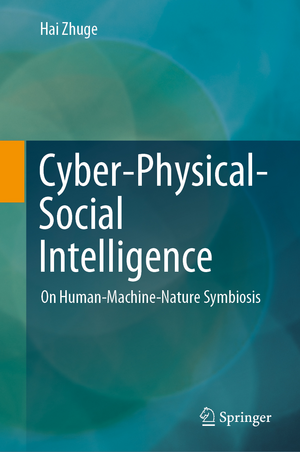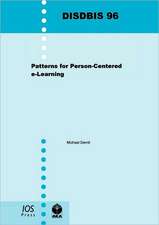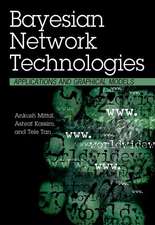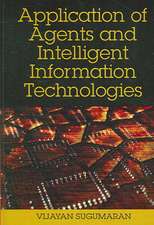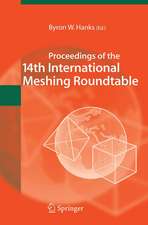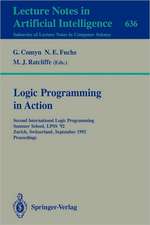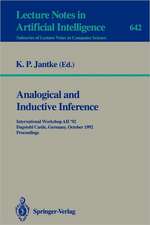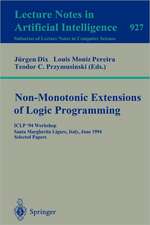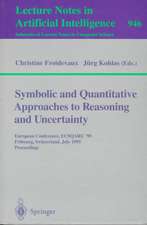Cyber-Physical-Social Intelligence: On Human-Machine-Nature Symbiosis
Autor Hai Zhugeen Limba Engleză Hardback – 13 noi 2020
Next-generation artificial intelligence will extend machine intelligence and human intelligence to cyber-physical-social intelligence rendered by various interactions in cyberspace, physical space and social space. With the transformational development of science and society, a multi-dimensional reality is emerging and evolving, leading to the generation and development of various spaces obeying different principles. A fundamental scientific challenge is uncovering the essential mechanisms and principles that structure and evolve the reality emerging and evolving along various dimensions. Meeting this challenge requires identifying the basic relations between humans, machines and nature in order to reveal the cyber-physical-social principles.
Preț: 998.11 lei
Preț vechi: 1247.64 lei
-20% Nou
Puncte Express: 1497
Preț estimativ în valută:
191.01€ • 198.68$ • 157.69£
191.01€ • 198.68$ • 157.69£
Carte tipărită la comandă
Livrare economică 14-28 aprilie
Preluare comenzi: 021 569.72.76
Specificații
ISBN-13: 9789811373107
ISBN-10: 9811373108
Pagini: 355
Ilustrații: XVIII, 351 p. 82 illus., 78 illus. in color.
Dimensiuni: 155 x 235 mm
Greutate: 0.72 kg
Ediția:1st ed. 2020
Editura: Springer Nature Singapore
Colecția Springer
Locul publicării:Singapore, Singapore
ISBN-10: 9811373108
Pagini: 355
Ilustrații: XVIII, 351 p. 82 illus., 78 illus. in color.
Dimensiuni: 155 x 235 mm
Greutate: 0.72 kg
Ediția:1st ed. 2020
Editura: Springer Nature Singapore
Colecția Springer
Locul publicării:Singapore, Singapore
Cuprins
1Introduction
1.1Cyber-Physical Society
1.2Data
1.2.1General definition of data
1.2.2Data for computing
1.2.3The philosophy of between material and mind
1.2.4Views on Big Data
1.2.5Big networks of data and humans
1.2.6The shift of science paradigm
1.2.7The fourth industrial revolution
1.2.8Observed system, data, information, knowledge, humans and machines
1.2.9Problems2Discovering Implicit Semantic Link in Cyber-Physical Society
2.1Semantic Link
2.2A brief history of Semantic Link Network
2.3Knowledge flowing through semantic links
2.4Modeling with local views and global views
2.5The Big Gap
2.6The Levels of Representation
2.7The semantic link networks that enable intelligence
3Dimensions on Data
3.1 Different views of Dimension
3.2 Dimensions on Big Data
3.3 Multi-dimensional category space
3.4 Complex multi-dimensional space and the tasks of analysis
4Multi-Dimensional Analytics
4.1 Data operation dimension
4.2 System behavior dimension
4.3 Value dimension
4.4 Time dimension4.5 Human dimension
4.6 Strategic planning on multiple dimensions an example
5Unconventional Mapping from Data Space into Knowledge Space
5.1 Mapping Representations into Wikipedia
5.2 Mapping data space into knowledge space with cognition
5.3 Mapping data into human-level concepts
5.4 Mapping from representation into knowledge through complex modeling
5.5 From correlation to knowledge
5.6 Human representation and machine representation
5.7 Knowledge flow through cognitive systems
6Cyber-Physical-Social Infrastructure
6.1 The development of Cyber-Infrastructure
6.2 Big gaps between humans and machines
6.3 Incorporating cognitive architecture into cyber-infrastructure
7Communities of Cognition and Practice
8New Paradigm of Science
8.1 The evolving paradigm of science
8.2 Science process with data, concept, motivation, thinking, knowledge and interaction
9The Nature of Big Data Computing
9.1 The computing nature
9.2 Problem-driven, data-driven, and data-based problem driven
9.3 Beyond Turing test
9.4 Analogical mapping
9.5 Toward an open interactive computing
10Mapping through Social Space
11The Emergence of Cyber-Physical-Social Intelligence
11.1 Fundamental problem
11.2 Methodology
11.3 Understanding: extensible mapping from reality into mental space
11.4 Cyber-Physical-Social-Mental Computing
11.5 Laws of the complex system
12Conclusion
13References
Notă biografică
Hai Zhuge is an ACM (Association of Computer Machinery) Distinguished Scientist and a Fellow of the British Computer Society. He has made a systematic contribution to semantics and knowledge modelling through fundamental research on the Semantic Link Network and the Resource Space Model based on multi-dimensional methodology. He is leading research on cyber-physical-social intelligence using methodological, theoretical and technical innovations. As an ACM Distinguished Speaker, he has delivered 20 keynotes at international conferences and invited lectures at universities in various countries. As a Professor, he is head of an international research network consisting of the Guangzhou University, the Key Laboratory of Intelligent Information Processing at the Institute of Computing Technology in Chinese Academy of Sciences, the University of Chinese Academy of Sciences, and the System Analytics Research Institute at Aston University. He was a Distinguished Visiting Fellow of the Royal Academy of Engineering. He is the author of four monographs: Cyber-Physical-Social Intelligence on Human-Machine-Nature Symbiosis (Springer, 2019), Multi-Dimensional Summarization in Cyber-Physical Society (Morgan Kaufmann, 20016), The Knowledge Grid: Toward Cyber-Physical Society (World Scientific, 2012), and The Web Resource Space Model (Springer, 2008). He is currently as an Associate Editor of IEEE Intelligent Systems.
Textul de pe ultima copertă
This book explores next-generation artificial intelligence based on the symbiosis between humans, machines and nature, including the rules and emerging patterns of recognition, and the integration and optimization of various flows through cyberspace, physical space and social space. It unveils a reciprocal human-machine-nature symbiotic mechanism together with relevant rules on structuring and evolving reality, and also proposes a multi-dimensional space for modelling reality and managing the methodologies for exploring reality. As such it lays the foundation for the emerging research area cyber-physical-social intelligence. Inspiring researchers and university students to explore the development of intelligence and scientific methodology, it is intended for researchers and broad readers with a basic understanding of computer science and the natural sciences.
Next-generation artificial intelligence will extend machine intelligence and human intelligence to cyber-physical-social intelligence rendered by various interactions in cyberspace, physical space and social space. With the transformational development of science and society, a multi-dimensional reality is emerging and evolving, leading to the generation and development of various spaces obeying different principles. A fundamental scientific challenge is uncovering the essential mechanisms and principles that structure and evolve the reality emerging and evolving along various dimensions. Meeting this challenge requires identifying the basic relations between humans, machines and nature in order to reveal the cyber-physical-social principles.
Next-generation artificial intelligence will extend machine intelligence and human intelligence to cyber-physical-social intelligence rendered by various interactions in cyberspace, physical space and social space. With the transformational development of science and society, a multi-dimensional reality is emerging and evolving, leading to the generation and development of various spaces obeying different principles. A fundamental scientific challenge is uncovering the essential mechanisms and principles that structure and evolve the reality emerging and evolving along various dimensions. Meeting this challenge requires identifying the basic relations between humans, machines and nature in order to reveal the cyber-physical-social principles.
Caracteristici
Is the first book on next-generation artificial intelligence: cyber-physical-social intelligence
Proposes the human-machine-nature symbiosis – a reciprocal mechanism for structuring and evolving reality
Provides multi-dimensional methodology for exploring the emerging cyber-physical-social space
Proposes the human-machine-nature symbiosis – a reciprocal mechanism for structuring and evolving reality
Provides multi-dimensional methodology for exploring the emerging cyber-physical-social space
